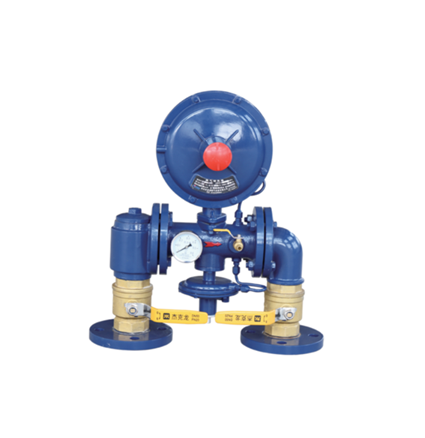
Nov . 26, 2024 02:23
Back to list
Understanding the Importance and Functionality of Pressure Relief Valves in Various Applications
Understanding Relief Valves Function, Types, and Applications
Relief valves are essential components in various engineering systems, particularly in the fields of mechanical and process engineering. They play a critical role in maintaining system safety and efficiency by preventing excessive pressure buildup. This article aims to delve into the function, different types, and applications of relief valves, highlighting their importance in various industries.
What is a Relief Valve?
A relief valve is a safety device designed to protect a system from overpressurization. When pressure exceeds a predetermined limit, the valve opens to release excess pressure, thereby preventing potential damage to equipment or even catastrophic failures. This mechanism ensures that the pressure within a system remains within safe operational limits, safeguarding not only machinery but also personnel working nearby.
How Relief Valves Work
The operation of a relief valve is relatively straightforward. It consists of a valve body, a spring, and a sealing mechanism. The valve is set to open at a specific pressure, known as the set pressure. As pressure builds up within a system, it exerts force against the valve mechanism. Once the pressure reaches the set point, the force overcomes the spring resistance, causing the valve to open. This action allows excess fluid or gas to escape, thus lowering the system pressure back to a safe level.
Types of Relief Valves
There are several types of relief valves, each suited for different applications
1. Pressure Relief Valves (PRVs) These valves are commonly used in boilers, piping systems, and pressure vessels. They are designed to prevent pressure from exceeding critical levels, ensuring safe operation.
2. Safety Relief Valves (SRVs) Often utilized in scenarios involving gas and steam, SRVs are similar to PRVs but are explicitly designed to handle emergencies. They function quickly to avert hazardous situations.
3. Vacuum Relief Valves These valves protect systems from vacuum conditions that could cause collapse. They allow air to enter the system when internal pressure falls below atmospheric pressure.
relief valves

4. Pilot-Operated Relief Valves These sophisticated valves use a pilot signal to control their operation. They are ideal for high-pressure systems and provide better leakage control compared to conventional designs.
5. Bursting Discs While not a valve in the traditional sense, bursting discs serve a similar purpose. They rupture at a specific pressure to relieve excess pressure, often used as a backup in conjunction with other relief devices.
Applications of Relief Valves
Relief valves find applications across various industries, including
- Chemical Processing In chemical plants, relief valves protect reactors and storage tanks from overpressure, ensuring safe operations and environmental protection.
- Oil and Gas These valves prevent blowouts and over-pressurization in pipelines and storage tanks, playing a critical role in safety measures for both offshore and onshore facilities.
- HVAC Systems In heating, ventilation, and air conditioning systems, relief valves ensure that pressure levels do not exceed safe operating conditions, thereby maintaining efficiency and safety.
- Water Supply Systems They are utilized in municipal water systems to protect pipelines and storage tanks from pressure surges.
Conclusion
In conclusion, relief valves are vital safeguards in many engineering and industrial applications. Their ability to manage pressure effectively not only protects equipment but also ensures safety for workers and the environment. Understanding the different types of relief valves and their specific uses can aid engineers and technicians in selecting the appropriate devices for their systems, leading to improved reliability and safety in operations. As industries continue to evolve, the role of relief valves in maintaining pressure safety and efficiency will remain crucial.
Latest news
-
Safety Valve Spring-Loaded Design Overpressure ProtectionNewsJul.25,2025
-
Precision Voltage Regulator AC5 Accuracy Grade PerformanceNewsJul.25,2025
-
Natural Gas Pressure Regulating Skid Industrial Pipeline ApplicationsNewsJul.25,2025
-
Natural Gas Filter Stainless Steel Mesh Element DesignNewsJul.25,2025
-
Gas Pressure Regulator Valve Direct-Acting Spring-Loaded DesignNewsJul.25,2025
-
Decompression Equipment Multi-Stage Heat Exchange System DesignNewsJul.25,2025

